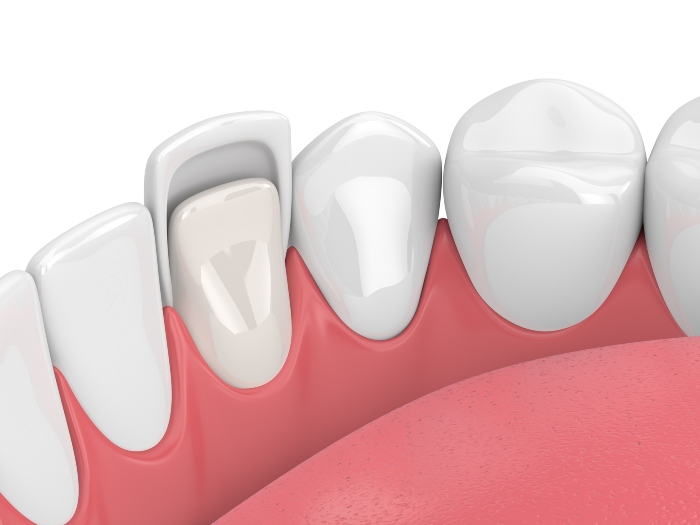Cosmetic Direct Bonding in North Phoenix, AZ
Dental Bonding in North Phoenix, AZ: An Effective Solution for Smile Restoration
If you have minor imperfections in your smile that are making you feel self-conscious, you may be a good candidate for dental bonding. Dental bonding can repair minor aesthetic issues like chips, gaps between teeth, stains, discoloration, and irregularly sized or shaped teeth. Dental bonding is a simple, minimally invasive treatment option that is completely reversible. At Matthew J. Cavendish, DDS, Dr. Cavendish and his team have extensive experience providing cosmetic dental bonding in North Phoenix, AZ. We can enhance your smile, address minor cosmetic issues, and improve your confidence and self-esteem with dental bonding.

What Is Dental Bonding or Direct Bonding?
Direct bonding is also called dental bonding or cosmetic bonding. It is a cosmetic dentistry procedure that improves the color, size, shape, and overall appearance of your teeth. During dental bonding, we use a composite resin material that mimics the natural color and appearance of your surrounding teeth. We can correct minor cosmetic and aesthetic issues like discoloration and stains, damage from tooth decay, and exposed tooth roots. Dental bonding is a faster and less invasive alternative to other cosmetic and restorative dentistry methods.
Who Should Consider Dental Bonding?
You should consider dental bonding if you have minor cosmetic or aesthetic issues affecting your smile, confidence, or self-esteem. Dr. Cavendish in North Phoenix can use cosmetic dental bonding to repair, conceal, or improve:
- Chips or cracks in your teeth
- Discoloration or staining
- Gaps or spaces between your teeth
- Small or short teeth
- Uneven or irregularly shaped teeth
What to Expect When You Get Cosmetic Dental Bonding
Before you undergo cosmetic dental bonding, Dr. Cavendish and his team will meet with you to go over your needs and goals. We want you to have clear expectations for the procedure and understand every step of the process. We will take dental x-rays and thoroughly examine your teeth, gums, and mouth. We can even show you a 3D rendering of what your teeth will look like once dental bonding is complete. You will then choose a shade of composite resin material for your bonding. We suggest you choose a color as close to your surrounding natural teeth as possible. Dr. Cavendish will then slightly roughen up the surface of your teeth to allow the bonding material to adhere. He will apply the composite resin material to each tooth, and mold and smooth it to the correct shape. He will then harden or cure the material with a special light and then polish your tooth or teeth until they shine. Composite bonding dental work is not painful or uncomfortable, and we don’t need to use anesthesia. It is a minimally invasive procedure, and you can immediately return to your regular activities without any downtime or recovery time.
Benefits of Dental Bonding
Unlike porcelain veneers, dental bonding is a reversible process. If you decide five years down the road that you aren’t happy with the results, we can remove the bonding material and restore your natural teeth. Most people do not want to remove their bonding material and are more than happy with the results of dental bonding. The biggest benefits of dental bonding are:
- Enhances the beauty of your smile.
- Can cover up minor imperfections like chips and cracks without requiring anesthesia or extensive dental work.
- Can fill in gaps or spaces between your teeth so you have an even, healthy smile.
- Can make your teeth all one color by covering up stains and discoloration.
- Can improve your confidence and self-esteem and help you feel good about your smile again.
- Does not require significant removal of tooth enamel and preserves the natural tooth as much as possible.
Dental Bonding for Cosmetic Purposes
Dental bonding is primarily used for cosmetic purposes, but it is also used in restorative dentistry to repair structural defects and abnormalities that could eventually affect the health or life of your tooth. Dental bonding can repair minor chips and cracks so they don’t get bigger and end up requiring tooth extraction. Dental bonding can also be used to correct damage caused by tooth decay and to cover up exposed tooth roots to protect them from injury and infection. Cosmetic dental bonding is used to correct minor cosmetic issues, including:
- Tooth discoloration
- Yellow, brown, black, or gray stains on teeth
- Chips or cracks that affect the shape or appearance of the teeth
- Gaps between teeth
- Teeth that are much smaller than the other teeth around them
- Teeth that are pointy, uneven, or an irregular shape
How Long Does Dental Bonding Last?
Your bonded teeth will stay healthy and beautiful with proper oral hygiene. You should brush twice per day with a soft toothbrush and use fluoridated toothpaste. You should also floss at least once per day and visit Dr. Cavendish each year for a professional dental cleaning and check-up. Bonding material can chip, so you should avoid chewing on ice or hard materials, chewing on pens, biting your fingernails, or using your teeth to open packages. With proper care, the results of dental bonding can last up to 10 years.
Schedule a Consultation for Dental Bonding
If you’re interested in finding out if you’re a good candidate for dental bonding in North Phoenix, AZ, call us today or contact us online. Our team at Matthew J. Cavendish, DDS, can do a full exam and take dental x-rays to determine if you would benefit from cosmetic dental bonding. We can also answer any questions you have about cosmetic dentistry. We may not recommend dental bonding if you have severe tooth decay, gum disease, or an infection.
